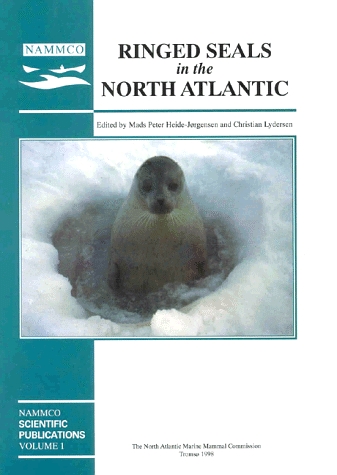Cadmium, mercury, zinc and selenium in ringed seals (Phoca hispida) from Greenland and Svalbard
DOI:
https://doi.org/10.7557/3.2992Keywords:
ringed seals, Phoca hispida, contaminants, heavy metals, pollutantsAbstract
Muscle, liver, and kidney tissue from 456 ringed seals (Phoca hispida) from eight areas in Greenland were analysed for cadmium, mercury, zinc and selenium. In general, cadmium concentrations were high in liver and kidney tissue, with geometric means of 7.79 and 33.5 μg/g (all data on wet weight basis), respectively. Muscle levels were considerably lower, at 0.067 μg/g. The concentration of mercury was relatively high in liver tissue with a geometric mean of 2.59 μg/g. Muscle and kidney mercury levels were somewhat lower, with geometric means of 0.210 and 0.956 μg/g, respectively.
Cadmium and mercury levels were strongly dependent upon age and sampling area, as well as the interaction combinations, indicating that the accumulation of cadmium and mercury varies with age and area. Mercury accumulated in all three tissues throughout life, whereas cadmium in liver and kidneys peaked in the age group 5-10 years old where after it dropped significantly.
Cadmium levels showed a tendency towards higher concentrations in the northern municipalities, which may be due to the higher cadmium levels in certain prey items in the northern areas. Mercury levels were higher in seals from East Greenland compared to West Greenland. Variations in feeding habits probably explain some of the differences in levels of cadmium and mercury in ringed seals from different geographical areas.
Cadmium concentrations were correlated (both pairwise and partial) in the three organs. This was true for mercury as well, whereas only half of the combinations were significant for zinc and selenium. Cadmium was strongly correlated to mercury in all three tissues and zinc only in liver and kidneys. Mercury was only correlated to selenium in liver and not to zinc.
High concentrations of cadmium were found in the bile from 58 ringed seals, and were about 10-fold higher than in muscle. The concentration of mercury in bile was relatively low, being only one third of the muscle level. The bile levels reflect that substantial amounts of especially cadmium are circulated through the bile. However, it is uncertain whether these amounts are actually excreted or reabsorbed in the intestine (enterohepatic circulation).





